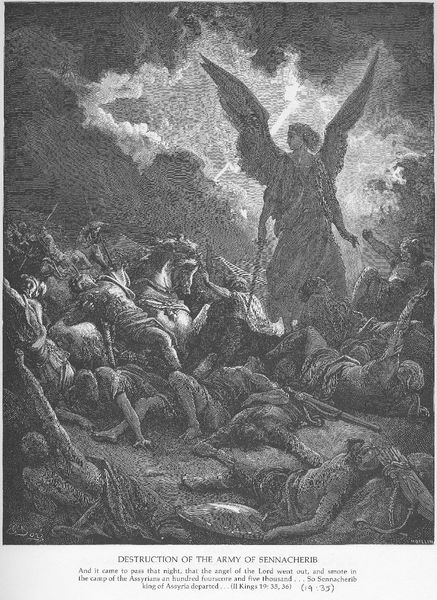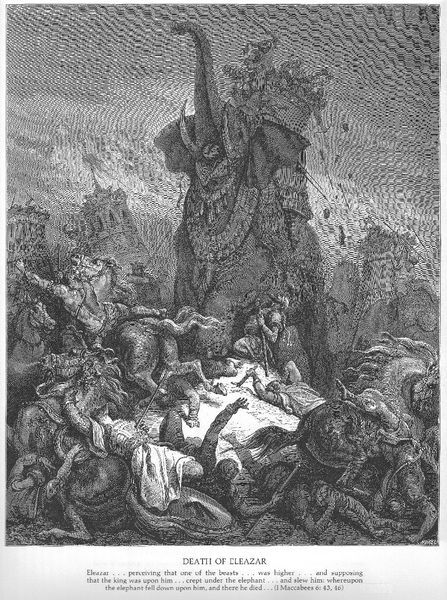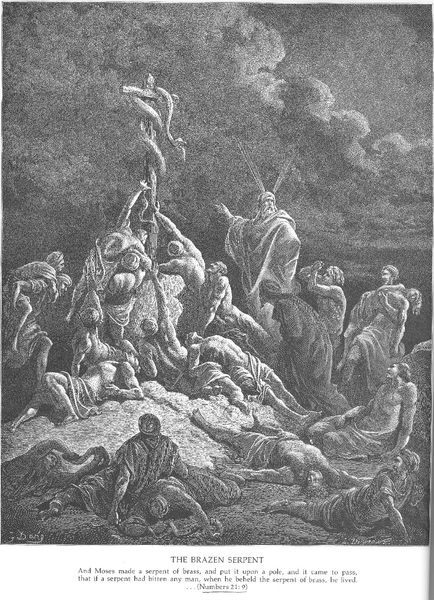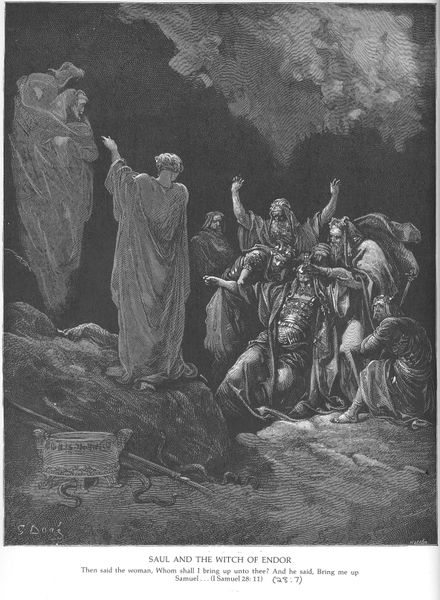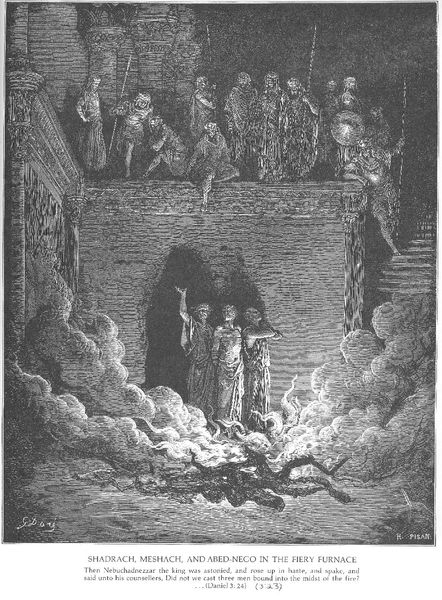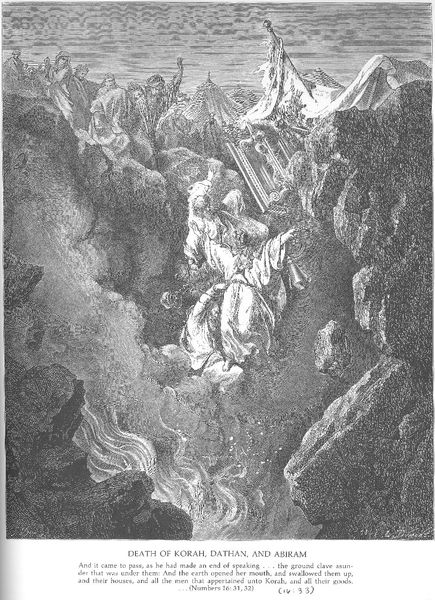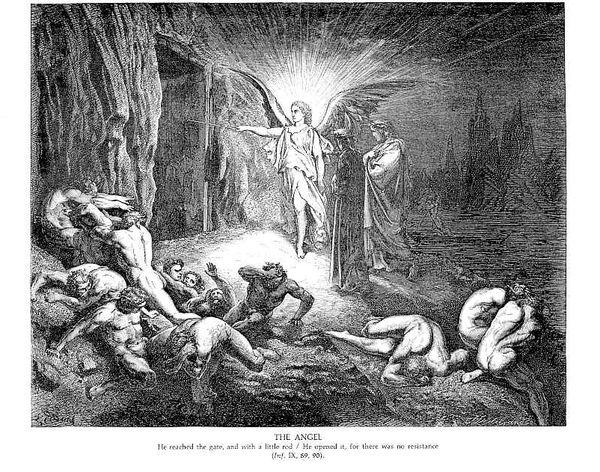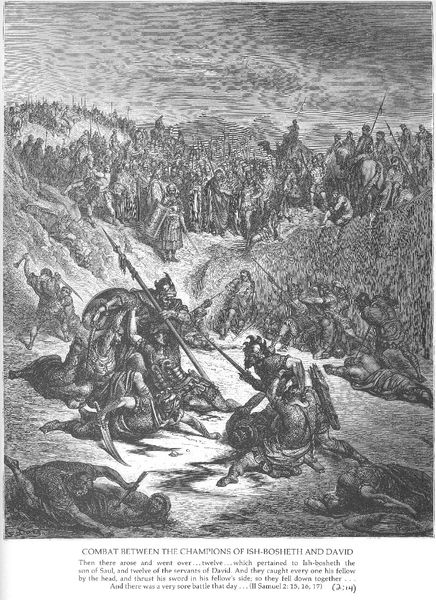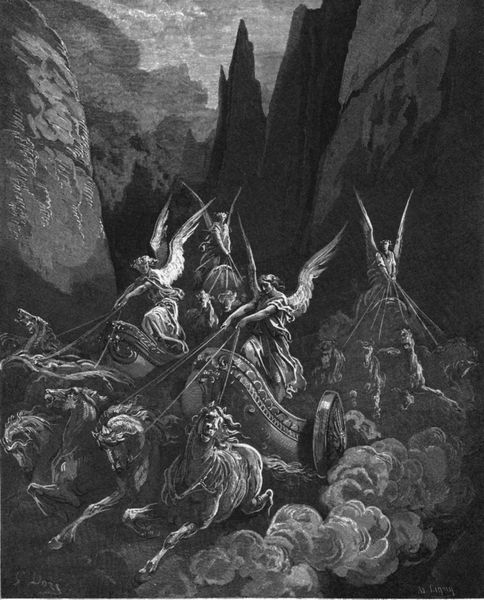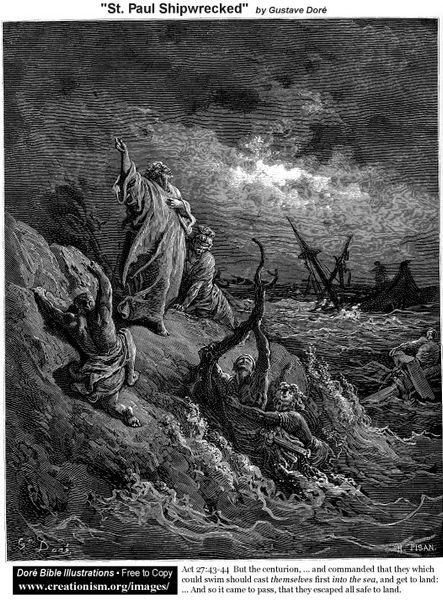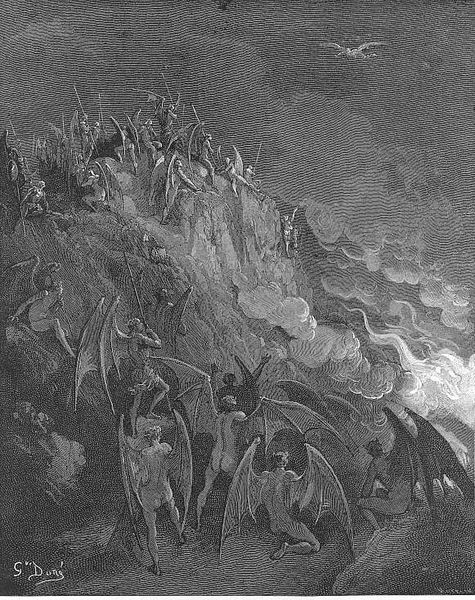
print, engraving
#
narrative-art
#
the-ancients
# print
#
war
#
romanticism
#
christianity
#
history-painting
#
natural texture
#
engraving
Copyright: Public domain
Curator: The sheer drama in this engraving by Gustave Dore, "Elijah Destroys the Messengers of Ahaziah," is undeniable. I find it absolutely mesmerizing. Editor: I’m immediately struck by the density of the composition; the intense contrast between light and shadow certainly amplifies that feeling of overwhelming chaos and destruction. Dore's ability to capture this raw emotion is stunning. Curator: Indeed. Dore, part of "The Ancients," wasn’t merely illustrating a biblical passage. The artist engaged with radical politics and drew much of his early work from London's East End. The engraving depicts a scene of religious power, certainly, but it could easily relate to a broader consideration of the use of institutional power and challenges to religious belief. Ahaziah, king of Israel, sends messengers to question a different deity, leading to the prophet Elijah unleashing divine retribution. This raises so many questions of colonial religious missions across race, class, gender. Editor: Absolutely, that makes sense given its potential historical contexts. But, the way he manipulates the engraving technique – the dense cross-hatching, the stark contrasts – contributes just as much to the narrative. The beam of divine fire is almost tactile, a visual embodiment of power. Note also how the figures are foreshortened. I believe this serves to push forward the drama and really places you within the space. Curator: Precisely, consider too how figures in similar narratives who use power often rely on specific rhetoric—on "truths"—as pillars to achieve the effects that Elijah here literally manifests. Editor: In short, it's about the dynamic interplay between content and form. The narrative obviously presents themes of power, defiance, and divine justice. But Dore’s romantic style choices – from dramatic composition to lighting – transform the tale into a breathtaking, and terrifying, visual experience. Curator: And what's implicit becomes a lens through which we may examine what structures perpetuate unequal power dynamics. It’s in those very shadows and the active wielding of symbolic language. Editor: Absolutely. A work that speaks both through the immediacy of visual impact, and the weight of the stories we bring to it.
Comments
No comments
Be the first to comment and join the conversation on the ultimate creative platform.
